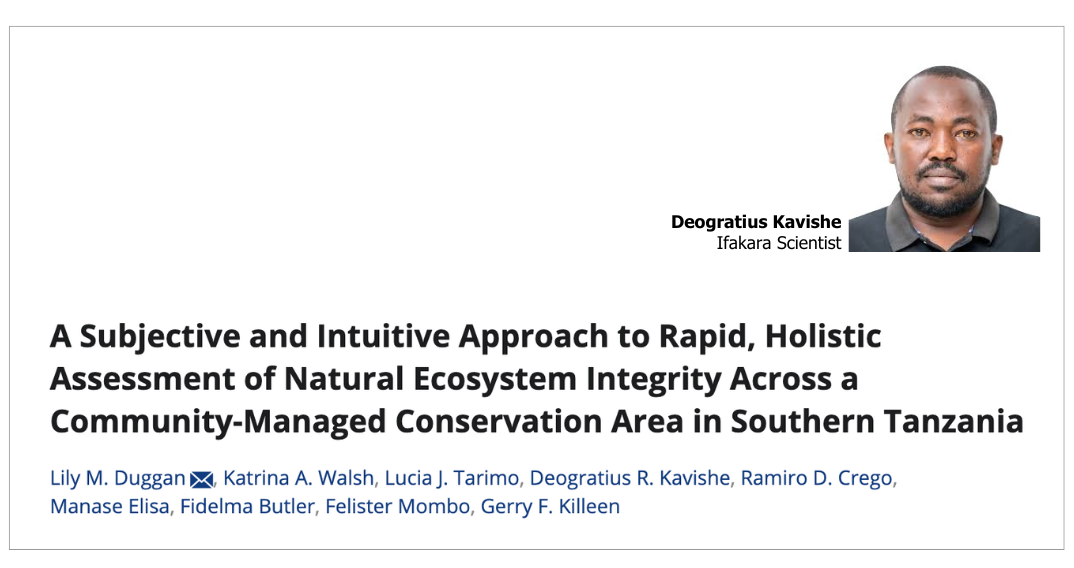
INNOVATION: New, simpler way to assess the natural ecosystems, wildlife populations

Local knowledge is so powerful!
Monitoring natural ecosystems doesn’t always require drones, satellites, or expensive surveys. A new study shows that local knowledge and firsthand observations can be just as powerful—in tracking ecosystem health, especially in resource-limited conservation areas.
Published on the Ecology and Evolution, the study introduces a simple yet effective tool called the Subjective Natural Ecosystem Integrity Index (SNEII), which relies on the informed observations and experience of trained field investigators on the ground.
SNEII is designed to help observers quickly assess the overall health of an ecosystem—without needing to collect or analyze hard scientific data. It was tested across 32 locations in and around the Ifakara-Lupiro-Mangula Wildlife Management Area (ILUMA WMA) in southern Tanzania.
Researchers found that this tool—based purely on what trained observers saw, heard, and experienced on the ground—matched or even outperformed more technical data-heavy methods in detecting human impact and environmental change.
The study was led by scientists from University College Cork (Ireland), Sokoine University of Agriculture (Tanzania) in collaboration with researchers from the Ifakara Health Institute (Tanzania) Lucia Tarimo and Deogratius Kavishe.
Why this matters now
Wildlife Management Areas (WMAs) like ILUMA are meant to empower communities to conserve land and wildlife while benefiting from tourism and natural resources. But many WMAs face challenges: limited budgets, human encroachment, and a lack of tools for monitoring change. SNEII offers a way forward—affordable, fast, and community-led.
“This simple procedure… may well be applicable through participatory approaches to routine programmatic monitoring by community-based staff with minimal training,” the scientists explain.
More: About this
A practical tool rooted in local expertise
Instead of collecting detailed quantitative data, researchers using SNEII simply assessed their surroundings—taking into account signs of wildlife, deforestation, farming, and human activity. These observations were translated into a percentage score from 0% (completely degraded) to 100% (fully intact).
The results? SNEII correlated strongly with formal scientific indicators, and in many cases, it captured more nuance—especially around human pressures like livestock grazing or farming near conservation areas. “SNEII proved to be far more statistically sensitive to variations in observed frequencies of human activities than any of the three composite objective indices,” the study states.
What the study revealed
🌱 Subjective doesn’t mean inaccurate
The SNEII method matched formal ecological surveys in most cases—and was better at flagging areas under pressure from human activity.
👣 Village Game Scouts are key players
Locally based scouts who already patrol WMAs could easily use SNEII as part of their daily routine—making conservation monitoring faster, cheaper, and more sustainable.
🌍 A model that can scale
Because the tool is low-cost and easy to train on, it could be adopted in other parts of Tanzania—or anywhere community-based conservation efforts are underway.
“Community-based professionals with especially relevant in-depth informal expertise… may well prove to be ideal observer-investigators,” the researchers noted.
A low-cost tool with high potential
This study offers strong evidence that empowering communities with tools like SNEII can transform how conservation is practiced. In places where funding and access to scientific expertise are limited, SNEII provides a practical and scalable way to track and protect natural ecosystems.
📘 Read the full study here: https://doi.org/10.1002/ece3.70872
